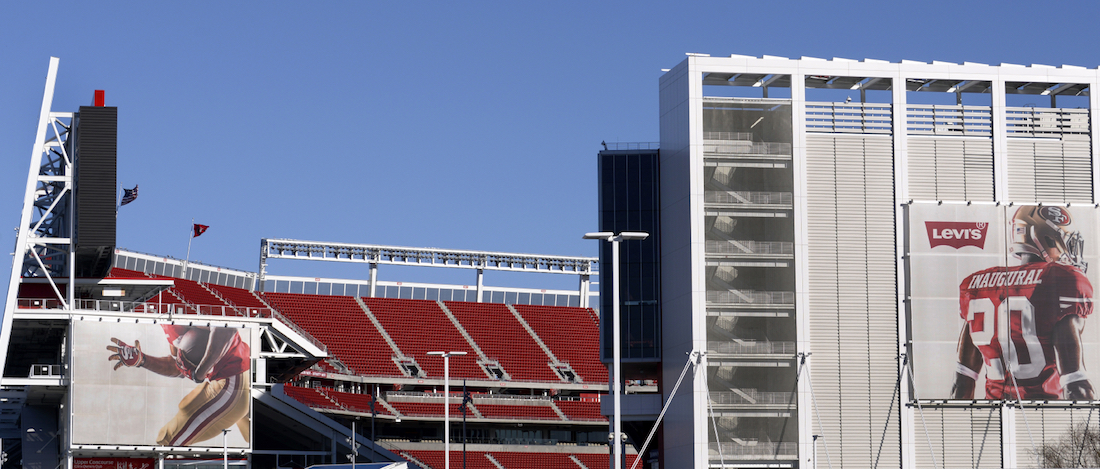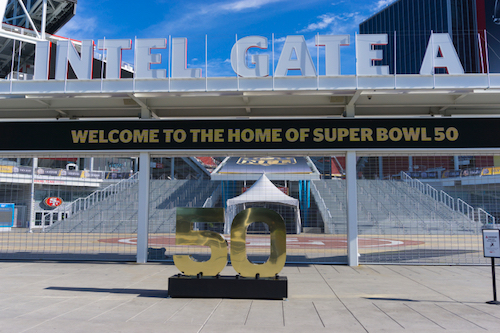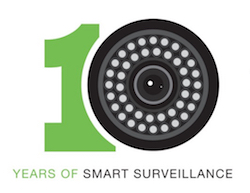
While christening the Bay Area’s new $1.2 billion Levi’s Stadium with its first Super Bowl, 1.85 million square feet was packed with 68,000 diehard fans cheering for their favorite team. If the sheer size of the stadium wasn’t daunting enough, consider the additional one million people that were estimated to have traveled to the Bay Area for the event, PLUS over 110 million watching live on national TV.
The task is to keep 68,000 fans secure
To say securing the event was a task is an understatement. With support from local authorities and even the U.S. Air Force, the Bay Area spent months planning for the big event to ensure not only the venue itself would be safe, but for transportation and local businesses to be as well.
 Video surveillance systems played a key role in securing the safety of the Super Bowl. Inside and outside the stadium, video surveillance systems were used to assist in managing traffic and alerting authorities of any abnormal behaviors or movements that could be a potential threat to the safety of the public. The stadium likely hosted 500-plus cameras recording 24/7 alone, a huge number in-and-of itself. However, security is only as good as the data it stores.
Video surveillance systems played a key role in securing the safety of the Super Bowl. Inside and outside the stadium, video surveillance systems were used to assist in managing traffic and alerting authorities of any abnormal behaviors or movements that could be a potential threat to the safety of the public. The stadium likely hosted 500-plus cameras recording 24/7 alone, a huge number in-and-of itself. However, security is only as good as the data it stores.
In that single day we approximate Levi’s Stadium would record over 22TB of video surveillance, retaining that video recording for a minimum of 90 days. Each camera provides a unique perspective to help piece together a timeline of events and reveal patterns for both security and event management to lean on. The loss of any video recording can be detrimental to the stadium.
How to design a video surveillance system
“There are several critical factors to consider when designing a video surveillance system,” explains Howard Himmelman, vice president of sales at Rasilient. “Purpose, environment, behavior, data capture and recall.”
Understanding why the video surveillance system is going to be installed is the first critical step to designing the most effective solution. Identifying the environment helps to build the foundation of a successful system. Knowing the environmental impact from weather conditions, temperature ranges and required recording hours will help customers decide on the right equipment and protocols that makes the most of a security system. Next, understanding the typical behaviors of that environment is critical. What may be typical behavior in a national football stadium is not necessarily the same as a traffic light or even a local restaurant.
 “Developing your expertise on these essential system design elements helps to deliver a surveillance system that is built to meet your expectations,” emphasized Himmelman.
“Developing your expertise on these essential system design elements helps to deliver a surveillance system that is built to meet your expectations,” emphasized Himmelman.
The final step in the process is crucial – capturing the video recordings. Without reliable video storage, a surveillance system will unravel. It starts by confirming that there is a clear video stream recording to your system. If recordings are pixelated or frames are dropped, it prevents users from identifying a foreign object or someone’s face. The system also needs to reliably process and replay video, both in the case of an incident that needs to be reviewed as well as video analytics.
“Storage is key to any surveillance setup,” noted Matt Rutledge, Seagate’s senior vice president, client storage. “It allows the recordings, analytics and alerts to ease the job of event security and management while everyone is watching – like at the Super Bowl.”






